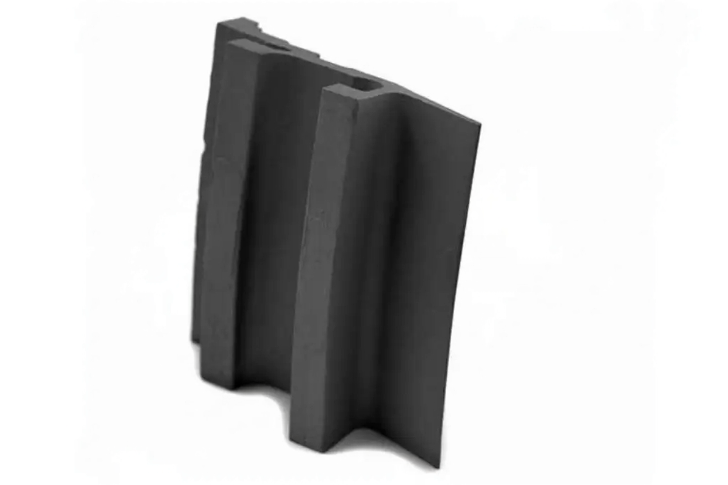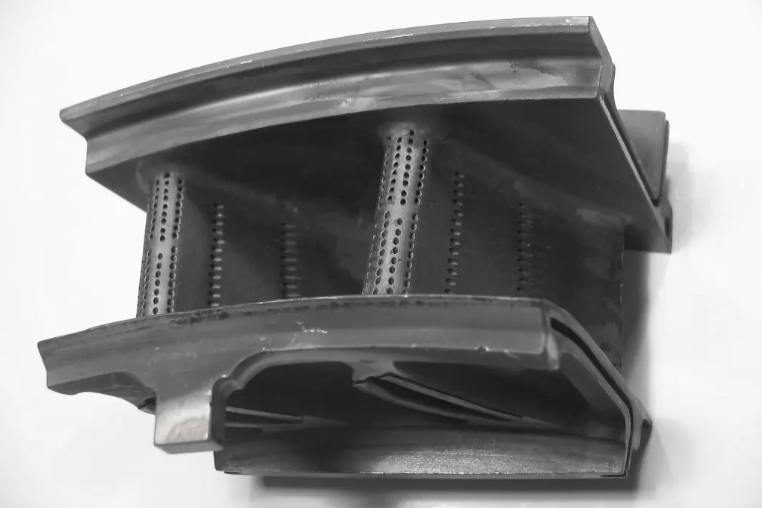Nimonic 80A Alloy in SLM: Precision Manufacturing Insights
Nimonic 80A, a nickel-chromium-based superalloy, is highly regarded for its exceptional resistance to high temperatures, oxidation, and creep. Its robust mechanical properties and durability make it a favored material in industries requiring components that can withstand extreme conditions, particularly aerospace, power generation, automotive, and chemical processing.
The development of Selective Laser Melting (SLM) technology has enhanced the application potential of Nimonic 80A, allowing manufacturers to produce intricate, high-strength parts layer by layer with remarkable precision. SLM enables the fabrication of complex geometries that were once impossible or prohibitively expensive to produce through traditional manufacturing methods. Combining SLM with Nimonic 80A's high-performance characteristics unlocks new possibilities for industries that rely on materials that endure severe thermal and mechanical stress.
With SLM, manufacturers can harness the benefits of Nimonic 80A in a streamlined, material-efficient process that delivers high-quality parts suited for the most demanding applications. This technology has transformed the landscape for precision manufacturing, bringing design flexibility, material efficiency, and speed to high-temperature applications.

Material Properties of Nimonic 80A for SLM 3D Printing
Nimonic 80A is a nickel-chromium alloy strengthened by adding aluminum and titanium. Its composition provides excellent resistance to high-temperature environments, making it a go-to choice for parts that must retain structural integrity under extreme heat. Additionally, Nimonic 80A demonstrates outstanding creep resistance, a property essential for components that undergo prolonged stress at elevated temperatures.
In addition to its heat resistance, Nimonic 80A is highly resistant to oxidation and corrosion. These properties enable it to perform reliably in environments that degrade other materials, such as jet engines, gas turbines, and industrial furnaces. Nimonic 80A is a high-performance alloy that meets stringent industry standards in applications where thermal stability and strength are non-negotiable.
The benefits of using Nimonic 80A in SLM are substantial. The precision of the SLM process enables the controlled melting and solidification of each layer, resulting in parts with minimal internal defects and optimized mechanical properties. This controlled environment ensures consistent quality, high density, and improved fatigue resistance. SLM-printed Nimonic 80A components also allow for weight reduction without compromising strength, making the material ideal for aerospace, automotive, and energy applications where efficiency and reliability are critical.
SLM 3D Printing Process for Nimonic 80A: Technology and Methodology
Selective Laser Melting (SLM) is an advanced additive manufacturing technique that builds components layer by layer from a powder bed. The process begins with a digital 3D model of the desired part, sliced into thin cross-sectional layers. During SLM, a laser selectively melts the Nimonic 80A powder according to each cross-section, bonding the powder particles to form a solid layer. This process repeats for each layer, with each new layer fusing to the one below it until the entire part is complete.
SLM offers numerous advantages when working with Nimonic 80A. The process provides manufacturers with exceptional design flexibility, allowing for the creating of complex geometries, internal channels, and lattice structures that would be challenging or impossible with traditional methods. SLM also minimizes material waste since only the necessary powder is melted to build each layer, and the unused powder can be recycled for future builds.
For Nimonic 80A, SLM is particularly advantageous because it allows precise control over the alloy's microstructure, enhancing its strength and thermal stability. The uniform layer-by-layer melting and rapid cooling in SLM contribute to a refined microstructure, improving the alloy's fatigue resistance and mechanical performance. It makes SLM an ideal manufacturing process for industries that require complex, lightweight, and high-strength components made from Nimonic 80A, such as those in aerospace and energy applications.
Post-Processing Techniques for SLM-Printed Nimonic 80A Parts
After the SLM process, post-processing is essential to ensure that the Nimonic 80A components meet the specifications for their intended applications. Several post-processing steps are commonly applied:
Hot Isostatic Pressing (HIP)
Hot Isostatic Pressing (HIP) improves the density and reduces porosity in SLM-printed Nimonic 80A parts. During HIP, the part is subjected to high pressure and temperature in an inert gas environment, which eliminates internal voids and enhances the part's mechanical properties, including fatigue resistance and tensile strength. HIP is significant for components in high-stress applications, where even minor porosity could impact performance and longevity.
Heat Treatment
Heat treatment is applied further to optimize the mechanical and thermal properties of Nimonic 80A. Heat treatment processes, such as aging, increase the material's creep resistance and hardness, making it better suited for applications exposed to sustained high temperatures. The controlled heating and cooling of Nimonic 80A parts refine the alloy's microstructure, ensuring that the material meets the demanding requirements of industries like aerospace and power generation.
Surface Finishing
Surface finishing processes, such as polishing, CNC machining, and coating, improve the part's surface quality, wear resistance, and dimensional accuracy. These techniques are essential for components requiring smooth finishes and precise tolerances, particularly in assemblies where tight-fitting parts must perform under high mechanical stress, ensuring reliability in critical applications.
Testing and Quality Assurance
Finally, rigorous testing and quality assurance ensure that each Nimonic 80A part meets industry standards for strength, durability, and thermal resistance. Testing protocols are vital to validate the part's performance and ensure its reliability in high-stakes applications, confirming its readiness for demanding operational conditions.
Testing and Inspection of Nimonic 80A SLM Parts
Given the critical applications of Nimonic 80A, thorough testing and inspection are essential to verify each part's quality and integrity. NewayAero employs a range of advanced testing methods to confirm the reliability of SLM-printed Nimonic 80A components:
Coordinate Measuring Machine (CMM) Testing
Coordinate Measuring Machine (CMM) Testing measures the dimensional accuracy of each part. By comparing the part's geometry to the original design, CMM testing ensures that the final product meets exacting specifications, which is crucial for precision applications.
X-ray and CT Scanning
X-ray and CT Scanning allow for non-destructive internal inspection, detecting flaws such as porosity, micro-cracks, or inclusions within the part. These methods are essential for verifying that the part is structurally sound and without defects that could compromise performance.
Scanning Electron Microscope (SEM) Analysis
SEM Analysis provides a detailed view of the material's microstructure, revealing any porosity, grain boundaries, or surface imperfections. SEM analysis helps assess the quality of the SLM process and identify any issues that may affect the part's mechanical properties.
Tensile and Creep Testing
Tensile and Creep Testing measure the strength and deformation characteristics of Nimonic 80A under stress. Creep testing evaluates the alloy's ability to withstand prolonged stress at high temperatures, a critical property for parts exposed to extreme thermal conditions.
Oxidation and Corrosion Testing
Oxidation and Corrosion Testing ensures Nimonic 80A components resist degradation in harsh environments. These tests confirm that the material maintains its properties when exposed to corrosive substances or oxidative conditions, validating its suitability for chemical processing and other demanding applications.
Industry Applications of SLM-Printed Nimonic 80A Components
The unique properties of Nimonic 80A, coupled with the precision of SLM, make it a preferred material for a wide range of high-performance applications across various industries:
Aerospace
Nimonic 80A's high-temperature resistance and creep strength make it ideal for turbine blades, jet engine components, and exhaust systems. The precision of SLM allows for lightweight, high-strength parts that contribute to improved fuel efficiency and performance in aerospace applications.
Power Generation
Nimonic 80A is used in power generation applications in turbine blades and other components that withstand extreme heat and stress. SLM-printed Nimonic 80A parts enable designs that optimize airflow and thermal management, enhancing the efficiency and longevity of power generation systems.
Automotive
Nimonic 80A is used in high-performance turbocharger components, exhaust systems, and other parts that endure high temperatures in the automotive industry. The strength and heat resistance of Nimonic 80A makes it a valuable material for enhancing vehicle performance, particularly in motorsports and high-end applications.
Chemical Processing
Nimonic 80A's resistance to corrosion and oxidation makes it well-suited for reactors, valves, and other components in chemical processing environments. SLM enables the rapid production of durable, corrosion-resistant parts tailored to the specific needs of chemical processing facilities.
Oil and Gas
The oil and gas industry utilizes Nimonic 80A for equipment exposed to harsh conditions, including high-pressure and corrosive environments. SLM technology allows for rapidly manufacturing complex, corrosion-resistant components, enhancing reliability in this demanding field.
FAQs
What makes Nimonic 80A suitable for SLM 3D printing in high-temperature applications?
What post-processing steps are typically applied to SLM-printed Nimonic 80A parts?
How does SLM technology improve the performance of Nimonic 80A components?
What are the leading industry applications of SLM-printed Nimonic 80A parts?
How does NewayAero ensure the quality of its SLM-printed Nimonic 80A components?



